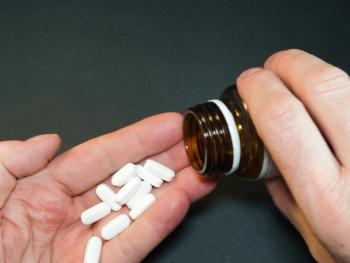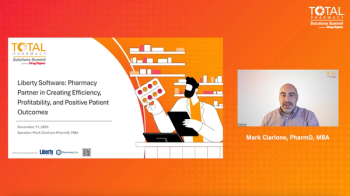
First Do No Harm
The tools for improving quality are available to almost every pharmacist and pharmacy technician, whose job is to make the system work. But this may be the weakness in pharmacy’s march to quality.
It is said the foremost ethical duty of any healthcare professional is “First, Do No Harm.” Most pharmacists interpret that to mean fill the prescription correctly – with the right drug in the right strength and with a label that correctly states the dose as prescribed.
First do no harm seems so simple. It is simple - but it is not easy.
Research by Auburn University College of Pharmacy found a “significant” error rate in community pharmacies was about one error in every one thousand (1/1,000) prescriptions filled.1 Compare that with a community pharmacy in Iowa City, Iowa, which had a significant error rate of one in ten thousand (1/10,000).2
Within the last few years almost every hospital and community pharmacy has installed some form of continuous quality improvement (CQI) program in their workflow. Today, almost every pharmacy owner, manager, and administrator realizes the dangers of errors in pharmacy dispensing.To combat this risk of injury to a patient, the people in charge have invested the money and time into CQI. As Dr. Edwards Deming, the father of virtually all quality programing in United States pharmacies, taught, the job of the boss is to provide for the workers the tools needed to increase quality.3 Pharmacy has done this.
The tools for improving quality are available to almost every pharmacist and pharmacy technician in the pharmacies where they work. The bosses have completed the first two steps in any CQI program - they have provided the tools to identify the risks where a mechanical error could occur and they have provided the tools to reduce the risks of an error reaching a patient.
The job now rests on the pharmacists and pharmacy technicians who work on the front line of dispensing. Their job is to make the system work. This may be the weakness in pharmacy’s march to quality. Pharmacists and technicians must study each safety step built into the CQI program in their pharmacy and educate everyone working in the workflow to use each step on every prescription. This is the third step in CQI and quality. This way every pharmacist and pharmacy technician can truly say they are living up to their ethical duty to “First Do No Harm.”
In a future column, I will look at the fourth step in CQI and quality – monitoring the results and answering the twin questions “Did we get better. Is our quality higher that last month.?”
KEN BAKER, BS, JD, is a pharmacist and an attorney. He teaches ethics at Midwestern University, Glendale, Arizona, campus and risk management for the University of Florida. He consults in the areas of pharmacy error reduction, communication, and risk management. Mr. Baker consults with Pharmacists Mutual Insurance Company and is an attorney, of counsel, with the Arizona law firm of Renaud Cook Drury Mesaros, PA. E-mail
Ken@kenbakerconsulting.com.
References
1. Flynn EA, Barker, KN, Carnahan, BJ, National observational study of prescription dispensing accuracy and safety in 50 pharmacies. J Am Pharm Assoc. 2003;43:191–200. Vol. 43, No. 2, March/April 2003. The authors indicated that most mistakes (1.8% error rate) were not likely to cause harm, but some (about one in one thousand) had the potential of causing death or serious injury (~ 0.1%). These can be labeled as significant.
2. The Iowa City pharmacy was testing an implemented CQI system named Pharmacy Quality Commitment (PQC). The test was less scientific that the Auburn study. PQC was developed by Professor David Brushwood and Ken Baker, author of this article and was later sold to Pharmacists Mutual Insurance Company, and is today owned by the National Alliance of State Pharmacy Associations. It is may available through all 51 state pharmacy associations through the Alliance for Patient Medication (APMS). See https://medicationsafety.org/ Last aCCessed 1/4/2017.
3. See biography of Edwards Deming, https://deming.org/deming-the-man/ last accessed January 5, 2017. Dr. Deming developed Total Quality Management, which is the hallmark of quality for most manufacturers in the United States and world wide. TQC is the template for virtually all CQI programs used in pharmacy today.
Newsletter
Pharmacy practice is always changing. Stay ahead of the curve with the Drug Topics newsletter and get the latest drug information, industry trends, and patient care tips.











































































































































































































